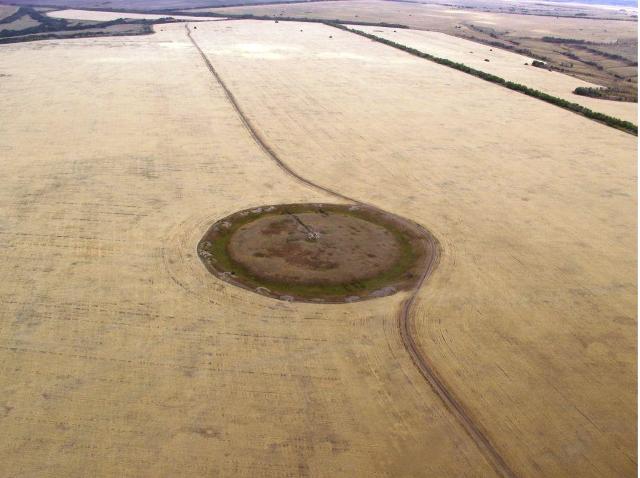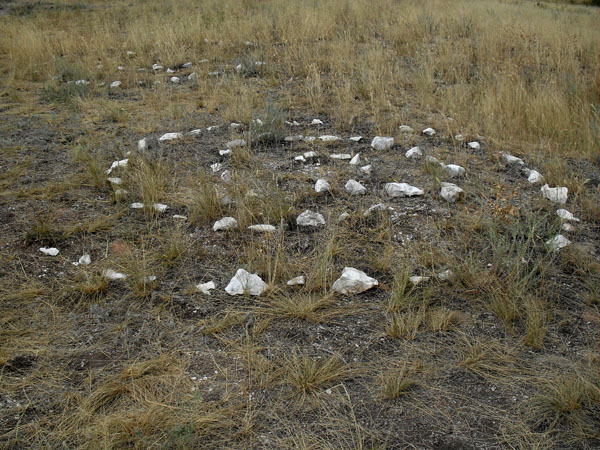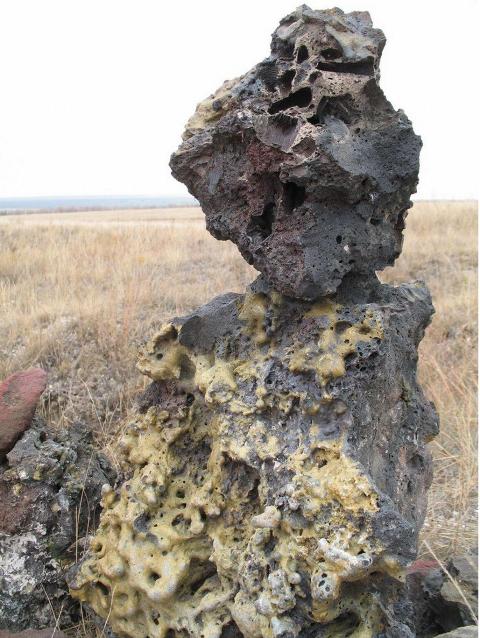In Ilovlinskiy district, near Trekhostrovskaya Cossack village there is an ancient pagan temple devoted to the fire god of Agni. On the photos taken in the space it looks like a navel. That is why it is called the navel of the world. The nature of the Trekhostrovskoe kapishche (pagan temple) remained unknown for a long period of time that’s why it is preserved intact.
Undoubtedly, the size of the pagan temple is impressive. It is a site, with a moat round it, of 200-metre diameter, which is 1.5 times larger than Stonehenge and 56 meters longer than the Arkaim settlement.
The age of the ancient pagan temple cannot be determined precisely. However, according to scientists it was built approximately 2,500-5,000 years ago. The archaeologists neither discovered artifacts nor remains of ancient people, as well as no signs of any dwellings on the territory of the pagan temple. However, the archeologists discovered an ancient welded layer of petrified ash, non-burnt coal, clay and chalk with the structure similar to hardened lava. Such kind of alloy can be produced by baking various materials in industrial furnaces but not in a fire. The source of high temperature remains unknown.
Tourists flock to see the ancient pagan temple. 15-20 minutes of standing on the hill will make visitors complain of headaches, while inside the mysterious ring they feel better and notice an inflow of energy. Mobile phones and cars do not function there. Some people say that stones at the pagan temple make wishes come true, but sometimes they provoke a poltergeist.
Most scientists consider the navel of the world in the Volgograd region unique in its kind in Europe and maybe in the world!


